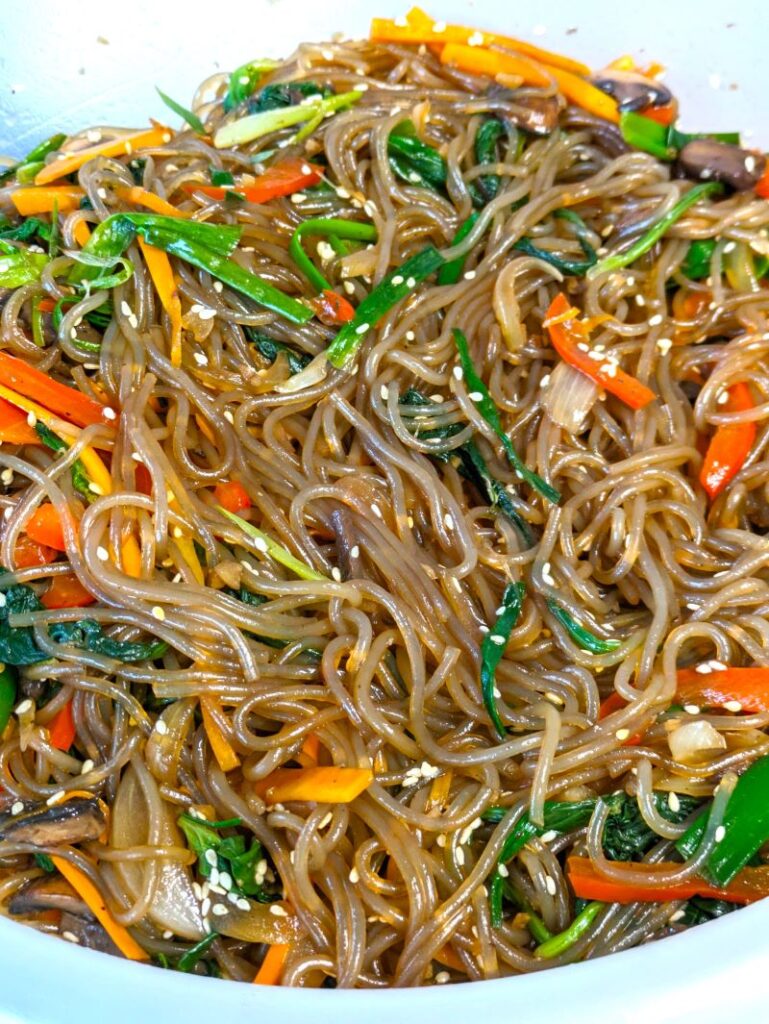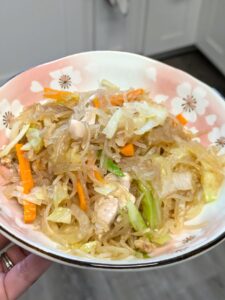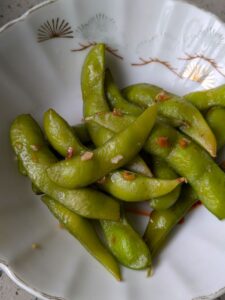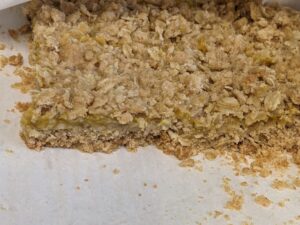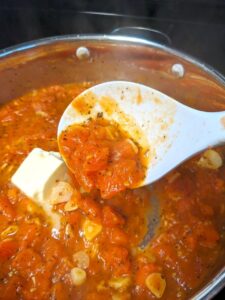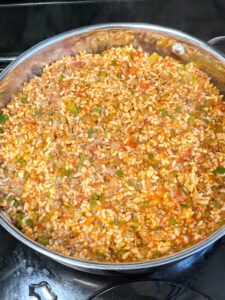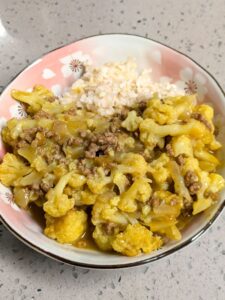A Hawaii-style Korean BBQ gathering wouldn’t be complete without this Potluck Japchae recipe. This chewy umami filled dish of sweet potato glass noodles is filled with healthy veggies that will balance out all the meat-forward barbecue offerings. While some kids love the texture of these slippery noodles, others may not like the chewiness, especially if they are fond of noodles made with flour.
The number of servings noted in the recipe below are for meal-sized portion of Japchae. So, this will easily feed 20 people (depending on the appetite size) a side-dish portion of noodles.
Oftentimes, cooking a large amount of food for a potluck or dinner party is different from cooking a smaller portion for a small family of four. This is true for this dish as well. Thus, there are some key elements to cooking a delicious dish of Japchae for a big group or for meal prep.
Japchae Ingredients
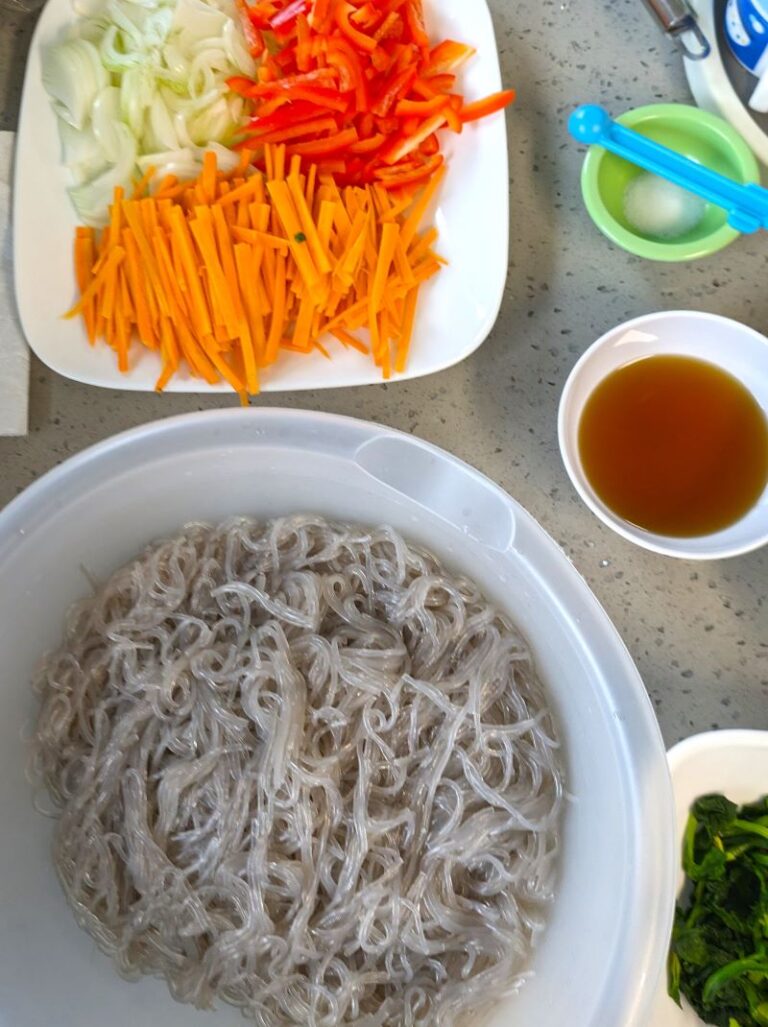
Hawaii locals will usually find Japchae with onions and maybe one other vegetable, like carrots, at a Korean BBQ plate lunch restaurant as a side dish, also called banchan. However, for a special occasion or celebration, it is common to serve this dish with lots of different vegetables, eggs, and even sautéed meat.
The Japchae sauce is a simple combination of 3 key ingredients: soy sauce (shoyu), sesame oil, and sugar. The vegetables are seasoned with salt and pepper as they are cooked, and the sauce ingredients are mixed with the sweet potato glass noodles. There are some Japchae recipes that show you how to cook everything in one pan and are intended for one meal or for a small family. This is not that recipe.
Tips for Cooking a Large Batch of Japchae
Vegetables
Prep the vegetables in advance. Wash and slice everything before you turn on the burner. Prepping all these elements before you start cooking will help to prevent overcooking or undercooking a component of the dish. What’s great about this is that you can wash and chop all your vegetables the day before you plan to serve the Japchae.
Cook each type of vegetable by itself in the sauté pan. Separately cooking each vegetable helps to ensure even cooking of each vegetable. For example, mushrooms may take 7 to 8 minutes to cook but the carrots will only take 2 to 3 minutes. What makes this dish so delightful is the wide variety of vegetables and each of them being cooked the right amount of time.
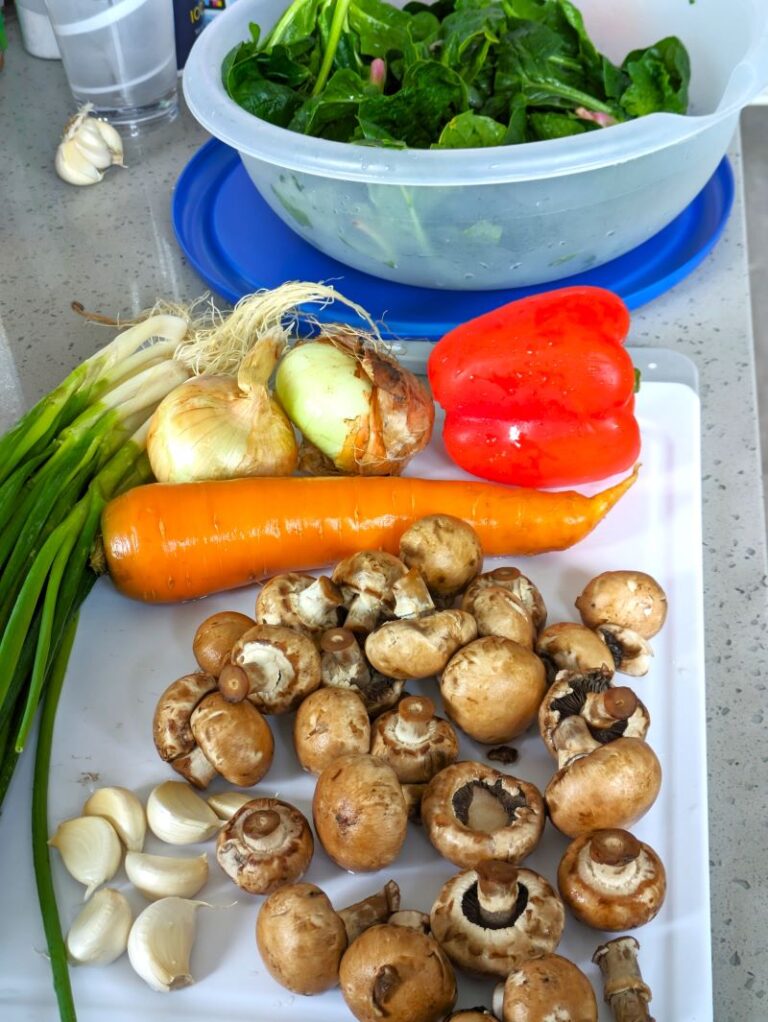
Sweet Potato Glass Noodles
These glass noodles take only about 5 to 6 minutes to cook in boiling water. Once cooked, drain the noodles in a colander and use kitchen shears to cut the noodles into smaller pieces to make eating easier. Just like any other noodle, sweet potato glass noodles do stick together after sitting for a few minutes. You can avoid this by pouring some of the soy sauce and sesame oil used to flavor this dish onto the noodles and mixing it well. This will make it much easier for you to mix in the vegetables and evenly distribute them throughout the noodles once they are cooked.
Sweet Potato Glass Noodle Health Benefits
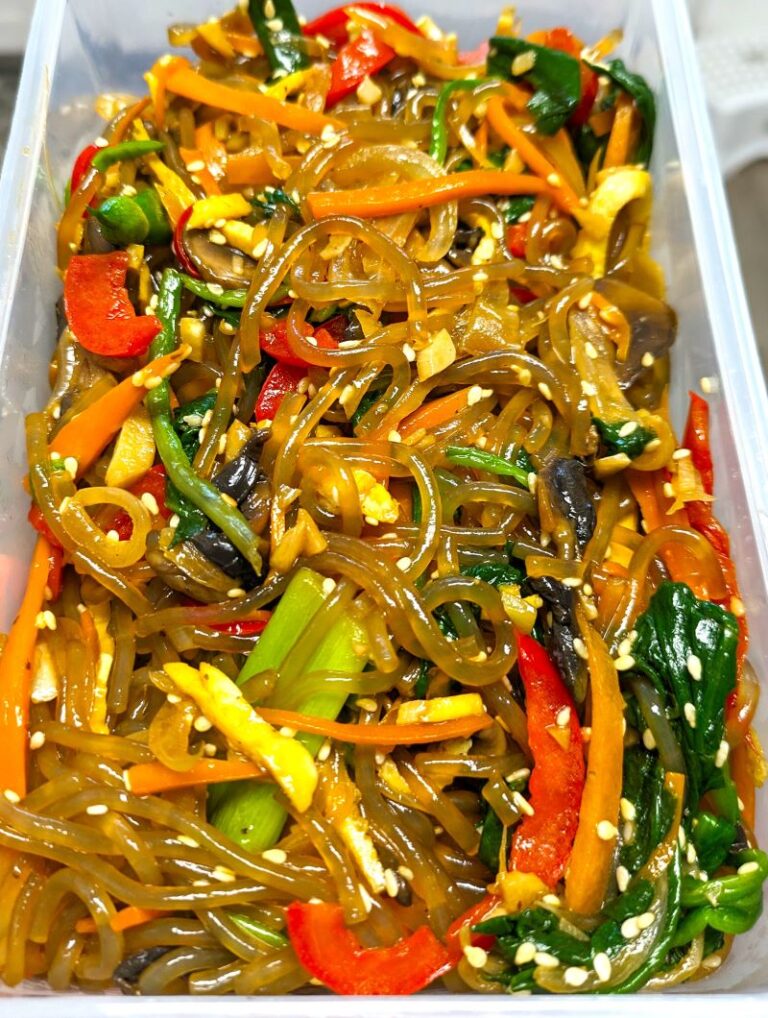
Sweet potato glass noodles surprisingly have lots of vitamins, such as Vitamins C and A, as well as lots of fiber. Besides helping to keep your immune system strong, vitamin C can also help to support healthy skin and nails.
Another benefit to these noodles is that they are gluten free making it a great alternative for those who can’t have wheat noodles. It provides more variety to those who may feel tired of eating only rice noodles in their gluten-avoidance quest. There are so many reasons to try these glass noodles that you should pick some up today for your next dinner party or meal prep session.
Here are more potluck-friendly recipes for you to try at your next office lunch or gathering with friends.
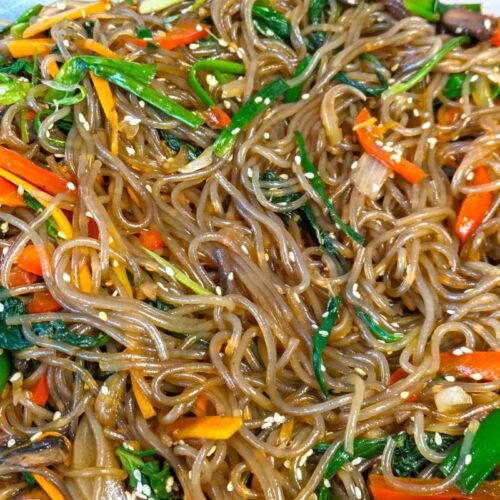
Potluck Japchae (Korean Glass Noodle Stir Fry)
Equipment
- 1 large pan
- 1 small bowl for eggs (optional)
- 1 spatula for eggs (optional)
- 1 small plate for eggs (optional)
- 1 large cutting board
- 1 chef's knife
- 1 5-quart pot
- 1 medium stainless steel mesh strainer
- 1 Colander
- 1 medium bowl
- 1 Large bowl
- 1 kitchen shears
Ingredients
- 6 tbsp canola oil or sunflower oil
- 2 large eggs optional
- 3 cups fresh spinach (about 1 bunch)
- 1 large carrot sliced into thin matchsticks (about 12 ounces)
- ¾ tsp salt divided
- ¾ tsp ground black pepper divided
- 1 red bell pepper cut into strips
- 1 large onion yellow or white, cut into strips
- 5 garlic cloves minced (about 2 tablespoons)
- 8 ounces button mushrooms or cremini mushrooms, sliced
- 1 bunch green onions or scallions, sliced into 1-inch pieces
- 1 pound sweet potato glass noodles (1000 g)
- ½ cup soy sauce divided
- ¼ cup sesame oil divided
- ¼ cup sesame seeds
Instructions
- Optional: Heat the large sauté pan on medium heat. Scramble the eggs in the small bowl, if using. Add 1 tablespoon of canola or sunflower oil, turn the pan to coat it with oil, then pour the eggs into the pan, spreading it thinly all over. Cook for about 1 to 2 minutes then flip. Move to a plate and let cool. Turn the burner off for now.
- Wash and chop all your vegetables, keeping each vegetable separate.
- Fill the 5-quart pot with water and bring to a boil on high heat. When the water is boiling, add spinach and blanch for about 1 minute. Remove spinach from pot with the stainless steel metal strainer and put in colander. Squeeze spinach tightly to remove the excess water and place in a medium bowl. Add 1 tsp of soy sauce and 1 tsp of sesame oil and mix well so the spinach is no longer stuck together.
- Add the sweet potato glass noodles to the same pot of water and cook for 5 minutes, stirring occasionally. Strain the noodles into the colander and rinse with cool water. Using the kitchen shears, cut the noodles into smaller pieces. Add the noodles to the large bowl along with half of the soy sauce, half of the sesame oil, and half of the coconut palm sugar. Mix well with your hands to combine. Add seasoned spinach to bowl.
- Heat the large sauté pan on medium heat. Add 1 tablespoon of canola or sunflower oil and cook the carrots with ¼ tsp of salt and ¼ tsp of ground black pepper for 2 to 3 minutes. Add the cooked carrots from the pan to the large bowl on top of the noodles.
- Add 1 tablespoon of canola or sunflower oil to the pan and cook the bell peppers with ¼ tsp of salt for 3 minutes. Add the cooked bell peppers to the bowl with the noodles.
- Add 1 tablespoon of canola or sunflower oil to the pan and cook the yellow or white onions with ¼ tsp of salt for 5 to 7 minutes. Add the cooked onions to the bowl with the noodles.
- Add 1 tablespoon of canola or sunflower oil to the pan and cook the mushrooms with the garlic and ¼ tsp of ground black pepper for 5 to 7 minutes. Add the cooked mushrooms to the bowl with the noodles.
- Add 1 tablespoon of canola or sunflower oil to the pan and cook the green onions for 1 minute. Add the cooked green onions to the bowl with the noodles.
- Optional: slice the cooled eggs into thin strips and add them to the bowl.
- Pour the remaining soy sauce, sesame oil, and coconut palm sugar over the noodles and vegetables and mix well with your hands, for about 2 minutes. Top with sesame seeds and serve.

